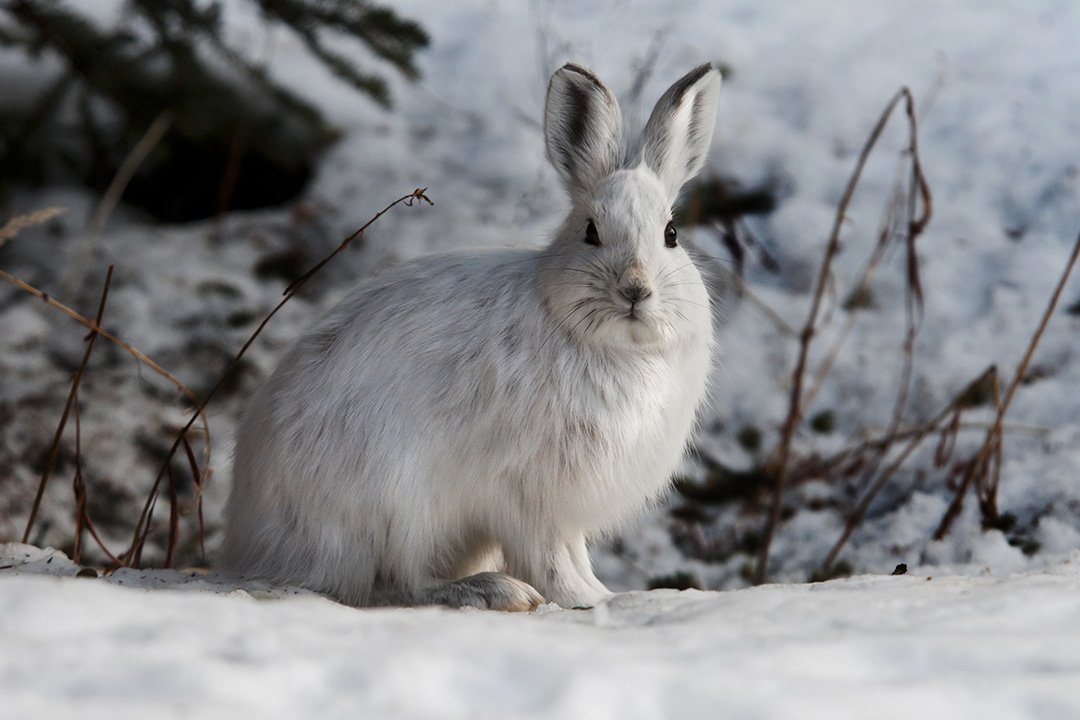
Toxic leftovers from Giant Mine found in snowshoe hares
Even though it was closed decades ago, the Giant Mine on the outskirts of Yellowknife has left a long environmental legacy.
By Som Niyogi, Solomon AmunoThe gold extraction process, which required roasting ores at extremely high temperatures, created a toxic byproduct called arsenic trioxide. For about 55 years (1948-2004), arsenic and other toxic elements were released into the environment, causing widespread contamination of the terrestrial and aquatic ecosystems around Yellowknife.
About 237,000 tonnes of arsenic trioxide dust is buried underground, and several nearby lakes show arsenic contamination.
Elevated arsenic levels have also been reported in soil, vegetation and fish around Yellowknife, but we knew little about how it has affected the health of the small mammals that live in the area.
Many of these fur-bearing animals are still being trapped for their pelts and for food, so knowing their arsenic levels is also important for human health.
Weak bones
Small mammals can serve as sentinels for environmental contamination. Snowshoe hares (Lepus americanus) live in a relatively small area and eat soil, so they are likely to accumulate higher levels of arsenic and other trace metals from the environment.
Exposure to elevated levels of arsenic can cause damage to the liver and other organs. And cadmium, a toxic metal and another byproduct of the gold extraction process, can replace calcium in the bones, leading to bone deformities and weakness.
In humans, chronic arsenic exposure (usually from water) can lead to changes in skin colour, skin growths and cancers of the skin, lung and internal organs.
When we measured arsenic and cadmium levels in hares living within two kilometres of the Giant Mine and compared them to hares living about 20 kilometres away from Yellowknife, the results were striking.
The arsenic levels in the guts of snowshoe hares living near the Giant Mine were 20-50 times greater than those living away from it. We also saw higher concentrations of arsenic in the organs and nails of the Giant Mine hares.
Cadmium levels were also higher but the difference wasn’t as marked. Hares from both locations had weaker bones and showed signs of osteoporosis, probably due to chronic exposure to cadmium.
Ecological implications
This chronic exposure to elevated levels of arsenic and cadmium may explain why snowshoe hares living near the Giant Mine are in poor health.
Wildlife living in metal contaminated areas in other parts of the world have also shown problems with reproduction, osteoporosis, neurological damage and chronic metabolic disease. But in Canada, it’s the first time we’ve seen small wild mammals with chronic arsenic poisoning.
The high levels of pollutants could compromise the long-term survival of the snowshoe hare and other small mammals in the Yellowknife area.
The high arsenic and cadmium burden in hares could have consequences for other animals that prey on them, such as foxes, wolves or other carnivorous mammals, and for the people who hunt them.

